consolidate_networks
 Consolidate Networks
Consolidate Networks
Consolidate Networks is a Qgis plugin toolset that helps you optimize the geometry of your line network.
This plugin provides processing algorithms that allow you to manipulate the vertices of a line layer.
You can repair topological problems and clean your data.
Github repository : https://sducournau.github.io/consolidate_networks/
Qgis plugin repository : https://plugins.qgis.org/plugins/consolidate_networks/
1. Preview

2. Models
CN | Self-repair Pipeline model
Apply multiple snappings steps and make the use of cn provider algorithms.
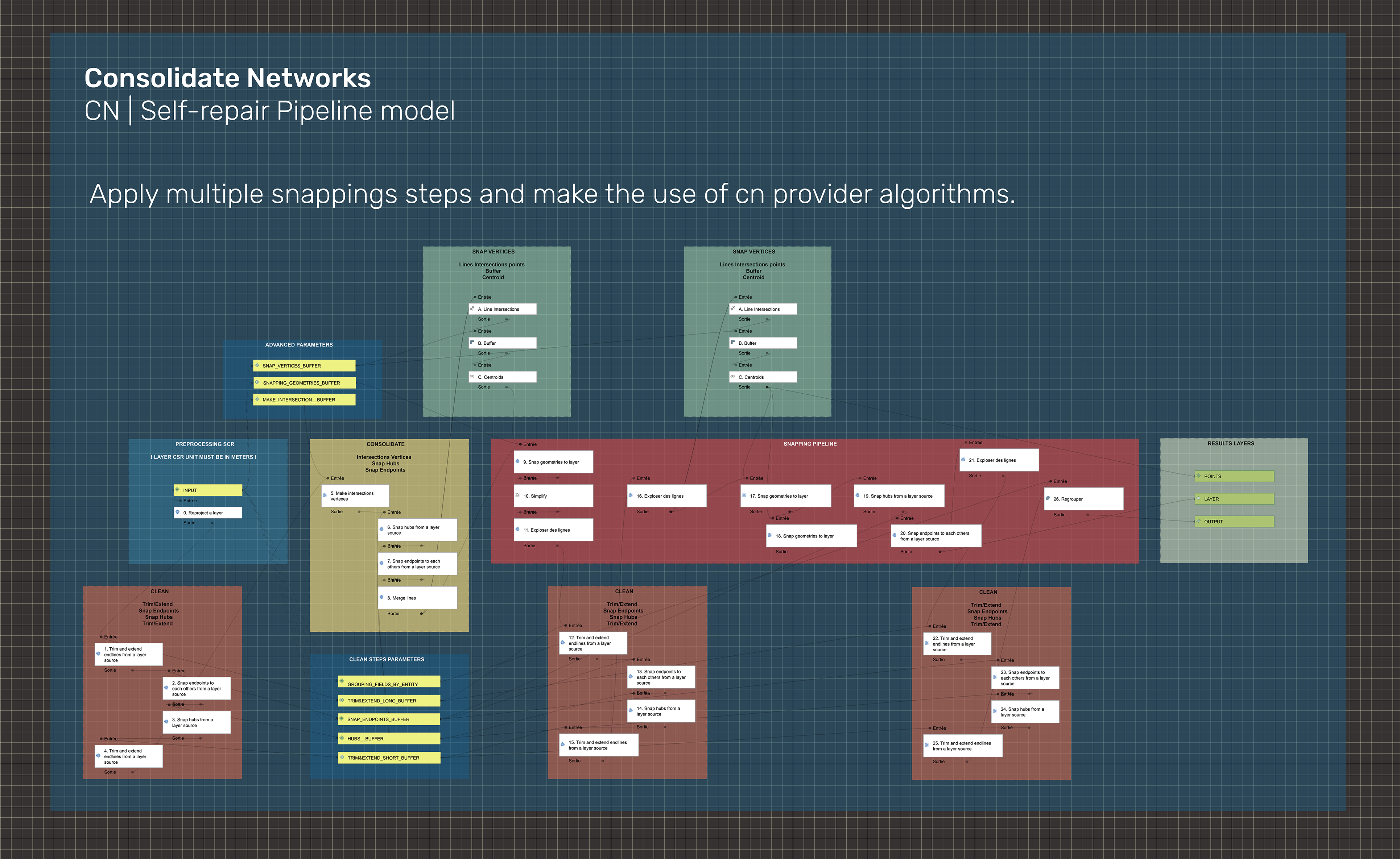
3. List of CN provider algorithms

DBscan and consolidate
CalculateDbscan()
Calculate dbscan clusters of lines from a layer source.
Processing algorithm
cn.calculatedbscan
Paramètres
{
"INPUT": QgsVectorLayer, # vector layer source (TypeVectorLine)
"FIX_GEOMETRIES_BEFORE_PROCESSING": true, # repairs the input layer geometries at the start of processing
"POINTS_DBSCAN_THRESHOLD_DISTANCE": 0.1, # a decimal distance in meter between each point, eq to vertices density to do a dbscan
"DBSCAN*": false, # consider border points as noise
"PRINT_DEBUG": false, # activates debug mode (print readable in the console)
"OUTPUT": "TEMPORARY_OUTPUT" # vector layer computed (TypeVectorLine)
}
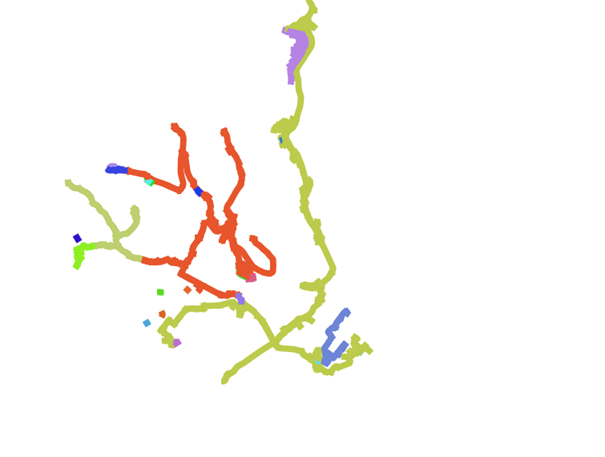
ConsolidateWithDbscan()
Snap lines to each other splitting by their clusters from a layer source resulted from CalculateDbscan().
Processing algorithm :
cn.consolidatewithdbscan
Paramètres
{
"INPUT": QgsVectorLayer, # vector layer source (TypeVectorLine)
"FIX_GEOMETRIES_BEFORE_PROCESSING": true, # repairs the input layer geometries at the start of processing
"BUFFER_DBSCAN": 5.0, # a decimal buffer radius to snap groups between them
"PRINT_DEBUG": false, # activates debug mode (print readable in the console)
"OUTPUT": "TEMPORARY_OUTPUT" # vector layer computed (TypeVectorLine)
}
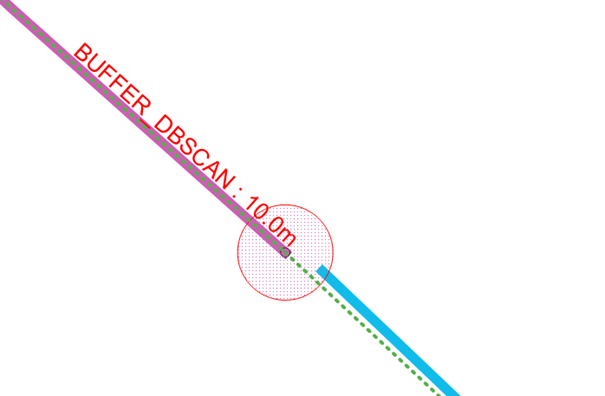
MakeIntersectionsVertexes()
Insert missing vertices from a source layer.
Processing algorithm :
cn.makeintersectionsvertexes
Paramètres
{
"INPUT": QgsVectorLayer, # vector layer source (TypeVectorLine)
"FIX_GEOMETRIES_BEFORE_PROCESSING": true, # repairs the input layer geometries at the start of processing
"ENTITY_IDENTIFICATION_FIELDS": [], # vector layer source fields to brings decomposed entities together, by default all fields are selected
"PRINT_DEBUG": false, # activates debug mode (print readable in the console)
"OUTPUT": "TEMPORARY_OUTPUT" # vector layer computed (TypeVectorLine)
}
Snapping layer (from himself)
EndpointsStrimmingExtending()
Cut and extend end lines from a layer source.
Processing algorithm :
cn.endpointstrimmingextending
Paramètres
{
"INPUT": QgsVectorLayer, # vector layer source (TypeVectorLine)
"FIX_GEOMETRIES_BEFORE_PROCESSING": true, # repairs the input layer geometries at the start of processing
"BUFFER_TRIM": 3.0, # maximum segment reduction distance
"BUFFER_EXTEND": 5.0, # maximum segment extension distance
"PREFERRED_BEHAVIOR_FOR_STARTING_EXTREMITIES": 1, # prefered behaviour for startings enpoints : 'Trim','Extend','None'
"PREFERRED_BEHAVIOR_FOR_ENDING_EXTREMITIES": 0, # prefered behaviour for endings enpoints : 'Trim','Extend','None'
"HAUSDORFF_DISTANCE_LIMIT": 5.0, # hausdorff distance limit to avoid calculations between geometries too similar
"ANGULAR_LIMIT_OF_PARALLEL_GEOMETRIES": 15.0, # angular limit difference between two geometries
"EXPLODE_AND_GATHER": false, # decomposes each entity into segments composed of two points at the start of processing, then brings them together at the end of processing
"ENTITY_IDENTIFICATION_FIELDS": [], # vector layer source fields to brings decomposed entities together, by default all fields are selected
"PRINT_DEBUG": false, # activates debug mode (print readable in the console)
"OUTPUT": "TEMPORARY_OUTPUT" # vector layer computed (TypeVectorLine)
}

EndpointsSnapping()
Snap lines endpoints' to each other's from a layer source.
Processing algorithm :
cn.endpointssnapping
Paramètres
{
"INPUT": QgsVectorLayer, # vector layer source (TypeVectorLine)
"FIX_GEOMETRIES_BEFORE_PROCESSING": true, # repairs the input layer geometries at the start of processing
"BUFFER_ENDPOINTS_SNAPPING": 5.0, # maximum snapping distance
"PREFERRED_BEHAVIOR_FOR_STARTING_EXTREMITIES": 1, # prefered behaviour for startings enpoints :
# 'Nearest, Minimum angular variation','Farest, Minimum angular variation',
# 'Nearest, Maximum angular variation','Farest, Maximum angular variation'
"PREFERRED_BEHAVIOR_FOR_ENDING_EXTREMITIES": 0, # prefered behaviour for endings enpoints :
# 'Nearest, Minimum angular variation','Farest, Minimum angular variation',
# 'Nearest, Maximum angular variation','Farest, Maximum angular variation'
"HAUSDORFF_DISTANCE_LIMIT": 5.0, # hausdorff distance limit to avoid calculations between geometries too similar
"MIN_ANGULAR_LIMIT_OF_PARALLEL_GEOMETRIES": 0.0, # minimum angular limit difference between two geometries
"MAX_ANGULAR_LIMIT_OF_PARALLEL_GEOMETRIES": 180.0, # mximum angular limit difference between two geometries
"PREFERS_SAME_GEOMETRY_DIRECTION": true, # favors entities whose geometry has the same direction
"EXPLODE_AND_GATHER": false, # decomposes each entity into segments composed of two points at the start of processing, then brings them together at the end of processing
"ENTITY_IDENTIFICATION_FIELDS": [], # vector layer source fields to brings decomposed entities together, by default all fields are selected
"PRINT_DEBUG": false, # activates debug mode (print readable in the console)
"OUTPUT": "TEMPORARY_OUTPUT" # vector layer computed (TypeVectorLine)
}
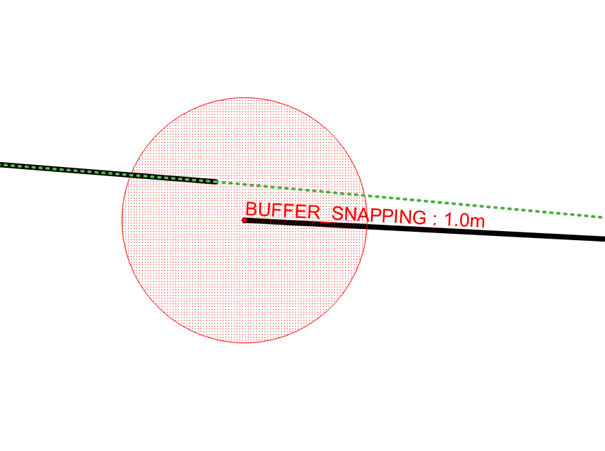
HubSnapping()
Align lines vertices' hubs on top of each other within a buffer.
Processing algorithm :
cn.hubsnapping
Paramètres
{
"INPUT": QgsVectorLayer, # vector layer source (TypeVectorLine)
"FIX_GEOMETRIES_BEFORE_PROCESSING": true, # repairs the input layer geometries at the start of processing
"BUFFER_HUB_SNAPPING": 1.5, # maximum hub distance between entities
"HUBPOINT_MUST_BE_AN_EXISTING_VERTEX": true, # the hub snap point is the closest vertex to the barycenter of the resulting polygon, otherwise it is the barycenter
"EXPLODE_AND_GATHER": false, # decomposes each entity into segments composed of two points at the start of processing, then brings them together at the end of processing
"ENTITY_IDENTIFICATION_FIELDS": [], # vector layer source fields to brings decomposed entities together, by default all fields are selected
"PRINT_DEBUG": false, # activates debug mode (print readable in the console)
"OUTPUT": "TEMPORARY_OUTPUT" # vector layer computed (TypeVectorLine)
}
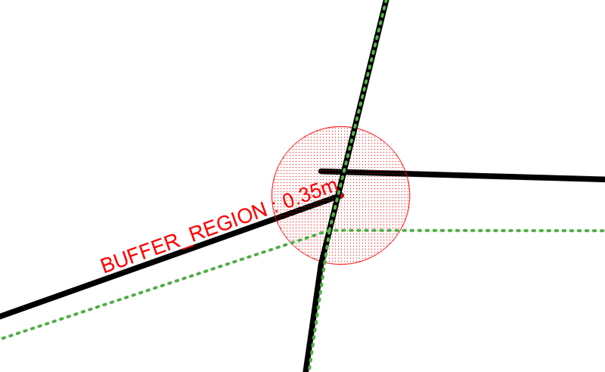
Snapping layer (from another layer)
SnapEndpointsToLayer()
Snap lines endpoints' to each other's from an other layer source.
Processing algorithm :
cn.snapendpointstoLayer
Paramètres
{
"INPUT": QgsVectorLayer, # vector layer source (TypeVectorLine)
"REF_INPUT": QgsVectorLayer, # reference vector layer source (TypeVectorLine, TypeVectorPoint)
"FIX_GEOMETRIES_BEFORE_PROCESSING": true, # repairs the input layer geometries at the start of processing
"BUFFER_ENDPOINTS_SNAPPING": 5.0, # maximum snapping distance
"PREFERRED_BEHAVIOR_FOR_STARTING_EXTREMITIES": 1, # prefered behaviour for startings enpoints :
# 'Nearest, Minimum angular variation','Farest, Minimum angular variation',
# 'Nearest, Maximum angular variation','Farest, Maximum angular variation'
"PREFERRED_BEHAVIOR_FOR_ENDING_EXTREMITIES": 0, # prefered behaviour for endings enpoints :
# 'Nearest, Minimum angular variation','Farest, Minimum angular variation',
# 'Nearest, Maximum angular variation','Farest, Maximum angular variation'
"HAUSDORFF_DISTANCE_LIMIT": 5.0, # hausdorff distance limit to avoid calculations between geometries too similar
"MIN_ANGULAR_LIMIT_OF_PARALLEL_GEOMETRIES": 0.0, # minimum angular limit difference between two geometries
"MAX_ANGULAR_LIMIT_OF_PARALLEL_GEOMETRIES": 180.0, # mximum angular limit difference between two geometries
"PREFERS_SAME_GEOMETRY_DIRECTION": true, # favors entities whose geometry has the same direction
"EXPLODE_AND_GATHER": false, # decomposes each entity into segments composed of two points at the start of processing, then brings them together at the end of processing
"ENTITY_IDENTIFICATION_FIELDS": [], # vector layer source fields to brings decomposed entities together, by default all fields are selected
"PRINT_DEBUG": false, # activates debug mode (print readable in the console)
"OUTPUT": "TEMPORARY_OUTPUT" # vector layer computed (TypeVectorLine)
}
SnapHubsPointsToLayer()
Align lines vertices' hubs on top of a point layer within a buffer.
Processing algorithm :
cn.snaphubspointstolayer
Paramètres
{
"INPUT": QgsVectorLayer, # vector layer source (TypeVectorLine)
"REF_INPUT": QgsVectorLayer, # reference vector layer source (TypeVectorLine, TypeVectorPoint)
"FIX_GEOMETRIES_BEFORE_PROCESSING": true, # repairs the input layer geometries at the start of processing
"BUFFER_HUB_SNAPPING": 1.5, # maximum hub distance between entities
"HUBPOINT_MUST_BE_AN_EXISTING_VERTEX": true, # the hub snap point is the closest vertex to the barycenter of the resulting polygon, otherwise it is the barycenter
"EXPLODE_AND_GATHER": false, # decomposes each entity into segments composed of two points at the start of processing, then brings them together at the end of processing
"ENTITY_IDENTIFICATION_FIELDS": [], # vector layer source fields to brings decomposed entities together, by default all fields are selected
"PRINT_DEBUG": false, # activates debug mode (print readable in the console)
"OUTPUT": "TEMPORARY_OUTPUT" # vector layer computed (TypeVectorLine)
}